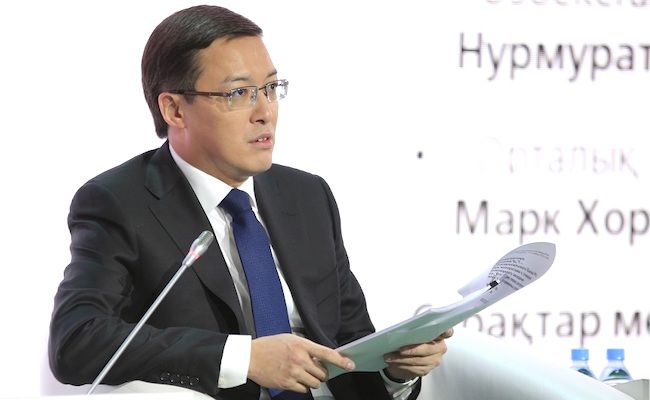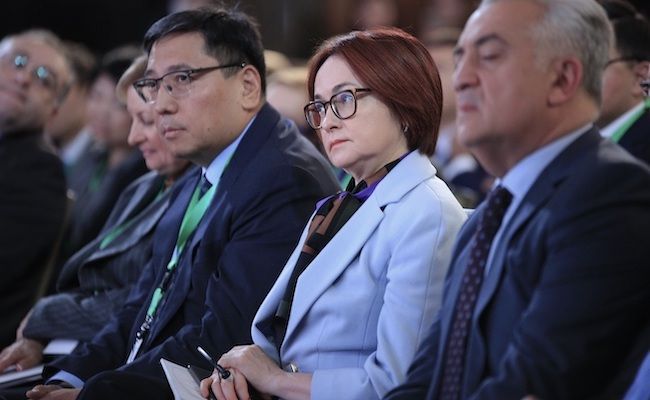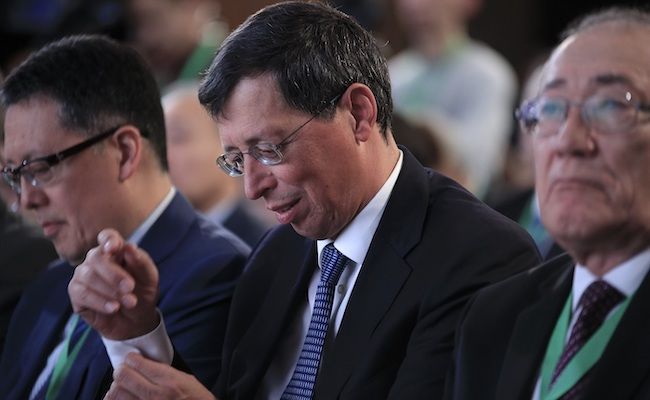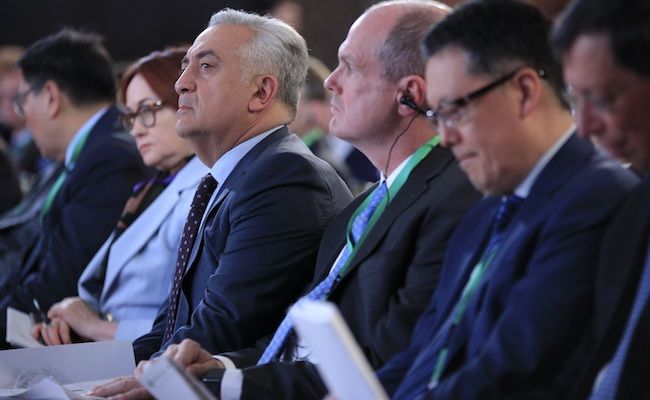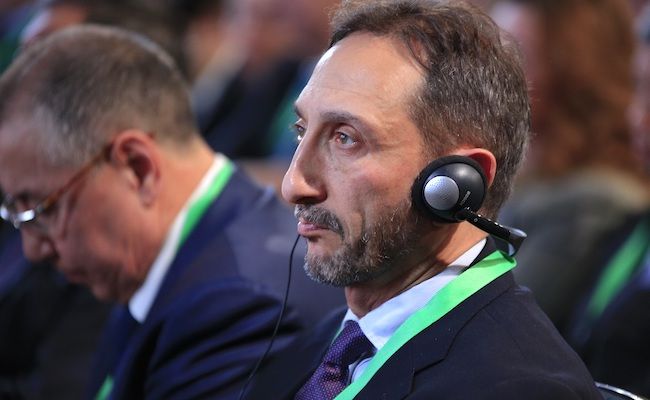This question arises when one is reading Daniyar Akishev’s speech given at the 8th Kazakhstan’s Financiers Congress held (not surprisingly) on the day of the national currency introduction. The speech in question mentions, among other things, Kazkommertsbank and how it was rescued by the Government.
Here is what the National Bank’s Chairman said according to the official press-release of November 15, 2018 (text in bold hereinafter by kz.expert).
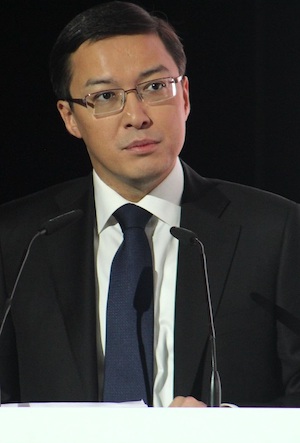
“We have intensified the work on adapting banks to the new circumstances since the economy can only function normally under the condition of the reliability of financial institutions”, said D. Akishev.
He informed that, in the course of two years, the National Bank of Kazakhstan had revoked the licenses of five banks. “The reasons lie in the low corporate standards and the weak systems of risk management as well as the massive granting of the a priori uncollectable loans to affiliated persons and the deliberate accounting misstatements. These were the main vulnerabilities of the financial institutes that had left the market”, said the Chairman of the National Bank.
Akishev underscored that, in regard to the systemic Kazkommertsbank, the recovery measures had been taken and, after its merger with Halyk Bank, a new competitive player had entered not only the domestic market but the entire CIS space.
“The National Bank of Kazakhstan had implemented the comprehensive Program of the banking sector’s financial stability increase. Its main goal was to sanitize the banking sector with the active use of the shareholders’ resources”, said he.
The Head of the National Bank of Kazakhstan underscored that, in exchange for the state support in the form of the subsidized reduced rate loans, the shareholders had taken commensurable obligations to increase the capitalization of their banks with a complete write-off of all the accumulated problem loans within the period of the next four years”.
Speaking at the 8th Kazakhstan’s Financiers Congress, Daniyar Akishev also reminded the audience that, starting from January 1, 2019, the Regulator introduces the risk-oriented approach to the supervisory process.
“Apart from that, in dealing with problem banks, we are switching to the recovery and resolution tools that include the mechanisms of the involuntary restructuring of a bank’s liabilities. These innovations are being introduced with due account for the international practices employed in the EU, the US as well as the EEU (on the model of Russia and Belarus, for instance)”, said he.
According to D. Akishev, experienced judgement will be used in re the coordination of the management and shareholders, the evaluation of formed provisions, the identification of affiliated persons and the assessment of the risk management and the internal control systems.
The Chairman of the National Bank also said that the goal of the experienced judgement introduction is eliminating the risks at the early stages in order to ensure the protection of the rights of the investors, the clients and other interested parties. The regime of eliciting and regulating the insolvent banks will be improved. A full inventory of the measures to help resolving the insolvent banks’ problems by minimizing the systemic repercussions and the governmental support is to be introduced”.
“D. Akishev explained that a successful realization of the Program demands taking further measures on nailing down the achieved results.
“We are talking about a complete and comprehensive assessment of the banks’ assets quality. We believe this procedure is needed, first of, by the banks themselves. An independent evaluation will allow to restore the investors’ trust in financial institutes. Employing an independent party for assessing the quality of the assets will ensure the objectivity”, noted D. Akishev.
We are going to comment on Daniyar Akishev’s words, and we will do so with the help of another financier (who is just as famous in the country as Mr. Akishev is). Namely, Chairperson of Halyk Bank Umut Shayakhmetova.
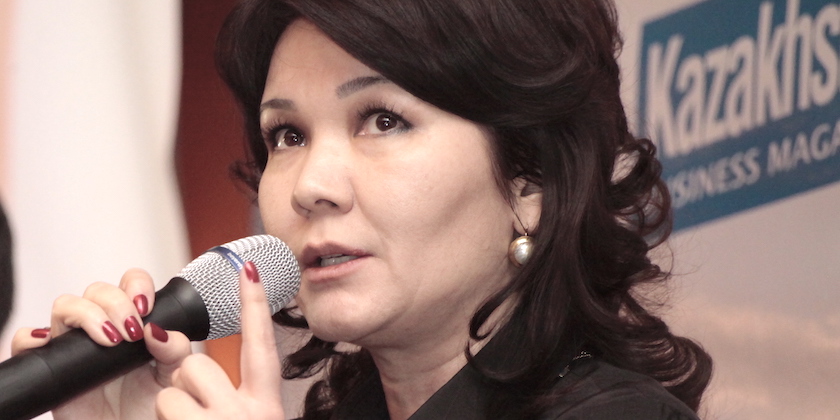
As early as August 7, 2018, in her interview to Forbes.kz, she said the following.
“The integration process took more than a year and a half. Essentially, it started in 2017 when we received Kenes Rakishev’s offer. And these were the events that had preceded it. In February 2016, Qazkom’s rating fell to the pre-default CCC. In December 2106, the bank could no longer fulfil its obligations and asked the National Bank for help. The bank received a stabilization loan in the amount of 400 bln tenge. But it wasn’t enough. So, in February 2017, it was given another 220 bln. At that point, the negotiations were already underway. Yes, we did not know what Qazkom was like but understood very well the part of its portfolio that came from BTA since, previously, we had conducted this bank’s due diligence.
In December 2016, Qazkom’s cash gap constituted 73% about 50% of which were the operational expenditures. In other words, the bank was eating away its capital and the clients’ deposits thus allowing for the cash to drain. We saw it. Therefore, our initial reaction to the purchasing offer was this. What do we need this for?
But the talks with the Government, the National Bank, Kenes Rakishev had begun. Everyone understood that Qazkom had three options: bankruptcy, nationalization or search for a strategic investor. The bankruptcy would have negatively affected the country’s entire banking sector; the people would panic, all the banks would experience the money outflow, the non-payment crisis would begin. As for the nationalization, we already had the negative experience with BTA in this regard. Therefore, eventually we said that we were prepared to close the deal provided we would receive help from the state. First of all, we insisted that the BTA portfolio, this “festering abscess” of the country’s entire banking sector, would be removed from Qazkom. We didn’t even want to look at it and thought that the state should allocate the resources and transfer it to the Problem Loans Fund”.
“In February 2017, the authorities made a decision that 1 trillion tenge would be provided by the National Fund, another 1 trillion – by the state budget and 240 bln – by the Problem Loans Fund. These 2.4 trillion were supposed to pay off BTA’s loan in Qazkom via the purchasing of the assets. How was it done technically? The Problem Loans Fund bought the assets that were sitting in BTA’s loan in Qazkom. And BTA sold its assets (essentially, mortgages and charges), received the money and paid off the Qazkom loan tenge-to-tenge”.
“As for Qazkom, having received 2.4 trillion tenge, it returned 1 trillion to the state budget immediately. Another 820 bln tenge were immediately paid to the National Bank. The remaining 575 bln tenge were used for the liquidity maintenance. The lion share of these funds was used for the closure of the national companies’ deposits – at that point, many of them were waiting impatiently for the moment to withdraw their money from Qazkom. And as soon as we came, about 200 bln tenge were withdrawn, mostly the national companies’ deposits”.
“The national companies kept about 1.8 trillion tenge. Another 1.4 trillion was constituted by the physical bodies’ deposits and about 1 trillion tenge - by the deposits of the legal bodies and the SME. Of 4.9 trillion, 3.4 trillion tenge constituted the problem loans: 2.4 trillion - BTA loans and 1 trillion - Qazkom loans. In other words, by the time of the Qazkom purchase, its capital fell to a zero. When we bought the bank, we had to invest another 250 bln tenge so that the bank’s capital would be sufficient. Therefore, the bank was not gifted to us, as some say. In reality, we had invested a lot of money in it. Apart from that, the management invested a massive amount of time in it; and we also had to hire consultants, hence the additional expenses for Halyk.
Having entered Qazkom, we started a tremendous work on sanitizing the non-performing loans. Because, even after the BTA assets withdrawal, the NPL Qazkom index constituted 46%. By the way, now this index already constitutes 23%. By comparison, in Halyk, it constitutes 6.9%”.
“Some things had shocked me personally. Without going into detail, I will just say the I was of a better opinion in re Qazkom’s risk-management. Some loans that had already been granted and are now considered non-performing astonished me”.
We will recall that Daniyar Akishev has been in charge of the National Bank since November 2, 2015. So, the bureaucratic and professional logics suggests, that, as the head of the Regulator, he should know of the real state of affairs not only at BTA Bank but Kazkommertsbank as well. However, Ms. Shayakhmetova’s words suggest that Kazkommertsbank’s non-performing loans (even after the BTA merger/demerger operations as part of which all the non-performing loans of the former were transferred to the balance-sheet of the latter) constituted as much as 46%!
Earlier, we had already expressed a doubt that the National Bank’s switch to the risk-oriented approach would change the Regulator’s way of doing things simply because all the Kazakh big financial institutes belong to the country’s influential people, namely, Nursultan Nazarbayev’s relatives and allies who have much more weight in Akorda than Daniyar Akishev does. Therefore, when implementing the risk-oriented policy, the latter will be forced to take this into consideration.
Being deeply aware of this fact, we, as early as April 3, 2018, in our publication Kazkom: the cat of out of the bag asked ourselves -
- Why had these facts not been discovered by the NBK earlier?
- And if they had been, why the Regulator showed no reaction and tried to conceal them?
- Does it mean the NBK assisted in deceiving the market and the bank’s clients?
Almost eight months has passed since then; however, by the looks of it, the National Bank of Kazakhstan continues to do nothing. At least, no kind of enforcement action against Kazkommertsbank’s former shareholders and top-managers including Nurzhan Subkhanberdin, Nina Zhusupova, Kenes Rakishev and so on has been taken. And it probably will not be.
By the way, this means that the National Bank has not only conceded (once again) its inability to restore the order in the financial sector while acting objectively and impartially but also presented Nursultan Nazarbayev’s main opponent with the proof that Akorda is persecuting Mukhtar Ablyazov for political reasons.
Because the fact that Kazkommertsbank had drowned in the exact way BTA Bank did, albeit eight years later, proves that there was no real difference between the loan policies of these two systemic financial institutes. The fact that the latter died before the former can be explained (quite logically) by the political “hit” on Mukhtar Ablyazov ordered by Akorda in 2009 and by Nurzhan Subkhanberdin’s lobbying capabilities that, at that time, were much stronger than they are now.
Slider photo from the Association of Financiers of Kazakhstan’s page



